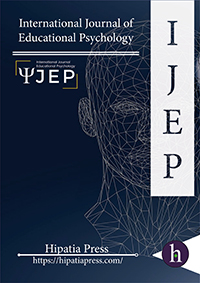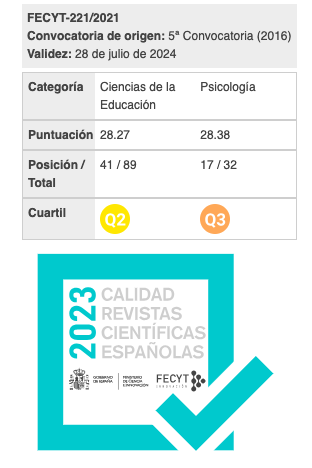Children’s Reflections on Two Cultural Ways of Working Together: “Talking with Hands and Eyes” or Requiring Words
Keywords:
Downloads
Abstract
Forty-four pairs of Mexican-heritage and European-heritage US children were asked to characterize differences between two contrasting cultural patterns of working together in video clips that showed a) Mexican Indigenous-heritage children working together by collaborating, helping, observing others, and using nonverbal as well as verbal communication, and b) middle-class European-American children working alone and using predominantly verbal communication.
Through experience in two cultural settings, bilingual Mexican-heritage US children may become familiar with these contrasting cultural patterns that have been identified in research. Mexican-heritage US children characterized the clips in ways that corresponded with researchers’ descriptions more often than did European-heritage children, when discussing working together and helping but not when discussing communication.
The children from the two backgrounds differed in their treatment of talk. In addition to talking more overall, half of the European-heritage US children considered talk a requirement for working together or helping, excluding nonverbal communication as a way of working together or helping. In contrast, the Mexican-heritage US children included nonverbal communication as a means of working together and helping, and some seemed to include nonverbal communication as a form of talking.
Downloads
References
Apfelbaum, E. (1978). Relations of domination and movements for liberation. In W. G. Austin, S. Worchel (Eds.), The social psychology of intergroup relations. (pp. 188-204). Monterey, CA: Brooks/Cole.
Google Scholar CrossrefBialystok, E., Craik, F.I.M., Green, D.W., & Gollan, T.H. (2009). Bilingual minds. Psychological Science in the Public Interest, 10, 89-129.
Google Scholar CrossrefBuchanan-Barrow, E. (2005). Children's understanding of the school. In Barrett, M., & Buchanan-Barrow, E. (Eds.), Children's understanding of society. (pp. 349-369). NY: Psychology Press.
Google Scholar CrossrefBrown, B. A. (2006). “It isn't no slang that can be said about this stuff”: Language, identity, and appropriating science discourse. Journal of Research in Science Teaching, 43(1), 96-126.
Google Scholar CrossrefCandela, A. (2005). Students’ participation as co-authoring of school institutional practices. Culture & Psychology, 11(3), 321–337.
Google Scholar CrossrefCazden, C. & John, V. (1971). Learning in American Indian children. In M. L. Wax, S. Diamond, F. O. Gearing (Eds.), Anthropological perspectives on education (pp. 252-272). NY: Basic.
Google Scholar CrossrefChavajay, P., & Rogoff, B. (2002). Schooling and traditional collaborative social organization of problem solving by Mayan mothers and children. Developmental Psychology, 38 (1), 55-66.
Google Scholar CrossrefChamoux, M. N. (1992). Aprendiendo de otro modo. In M.-N. Chamoux (Ed.), Trabajo, técnicas y aprendizaje en el México indígena (pp. 73-93). Mexico City: Centro de Investigaciones y Estudios Superiores en Antropología Social, Ediciones de la Casa Chata.
Google Scholar CrossrefCorrea-Chávez, M., Rogoff, B., & Mejía Arauz, R. (2005). Cultural patterns in attending to two events at once. Child Development, 76, 664-678.
Google Scholar CrossrefCorrea-Chávez, M., Roberts, A. L. D. & Martínez Pérez, M. (2011). Cultural patterns in children’s learning through keen observation and participation in their communities. In: J. Benson (Ed.). Advances in Child Behavior and Development, 40, (pp. 209-241).
Google Scholar CrossrefdeHaan, M. (1999). Learning as cultural practice: How children learn in a Mexican Mazahua community. Amsterdam: Thela Thesis.
Google Scholar CrossrefdeHaan, M. (2001). Intersubjectivity in models of learning and teaching. In S. Chaiklin (Ed.), The theory and practice of cultural-historical psychology. (pp. 174-199). Aarhus, Denmark: Aarhus University Press.
Google Scholar Crossrefde León, L. (2000). The emergent participant: Interactive patterns in the socialization of Tzotzil (Mayan) infants. Journal of Linguistic Anthropology, 8, 131-161.
Google Scholar CrossrefDelpit, L. (1995). Other people’s children. NY: New Press.
Google Scholar CrossrefDeyhle, D., & Swisher, K. (1997). Research in American Indian and Alaska Native education. In M. W. Apple (Ed.), Review of Research in Education, 22, 113-194.
Google Scholar CrossrefErickson, F. (1987). Transformation and school success. Anthropology and Education Quarterly, 18, 335-356.
Google Scholar CrossrefGaskins, S. (1999). Children’s daily lives in a Mayan village. In A. Goncü (Ed.), Children's engagement in the world. (pp. 25-60). New York: Cambridge.
Google Scholar CrossrefGutiérrez, K., & Rogoff, B. (2003). Cultural ways of learning: Individual traits or repertoires of practice. Educational Researcher, 32 (5), 19-25.
Google Scholar CrossrefHeath, S. B. (1983). Ways with words. Cambridge: Cambridge University Press.
Google Scholar CrossrefHoffman, E. (2008). Assessing the relationship between childhood bilingualism and social-emotional understanding. Dissertation Abstracts International: Section B: The Sciences and Engineering, 68 (10-B).
Google Scholar CrossrefHurtado, A. & Gurin, P. (2004). Chicana/o identity in a changing U.S. society, Quien soy? Quienes somos? Tucson: University of Arizona Press.
Google Scholar CrossrefKeller, H., Lamm, B., Abels, M., Yovsi, R., Borke, J., Jensen, H., Papaligoura, Z., Holub, C., Lo, W., Tomiyama, A. J., Su, Y., Wang, Y., & Chaudhary, N. (2006). Cultural models, socialization goals, and parental ethnotheories. Journal of Cross-Cultural Psychology, 37(2), 155-172.
Google Scholar CrossrefKim, H. S. (2002). We talk, therefore we think? A cultural analysis of the effect of talking on thinking. Journal of Personality and Social Psychology, 83, 828-842.
Google Scholar CrossrefLaosa, L. M. (1980). Maternal teaching strategies in Chicano and Anglo-American families. Child Development, 51, 759-765.
Google Scholar CrossrefLaosa, L. M. (1982). Schooling, occupation, culture, and family: The impact of parental schooling on the parent-child relationship. Journal of Educational Psychology, 74, 791-827.
Google Scholar CrossrefLi, J. (2005). Mind or virtue: Western and Chinese beliefs about learning. Current Directions in Psychological Science, 14, 190-194.
Google Scholar CrossrefLipka, J. (1994). Schools failing minority teachers. Educational Foundations, 8, 57-80.
Google Scholar CrossrefLópez, A., Correa-Chávez, M., Rogoff, B., & Gutiérrez, K. (2010). Attention to instruction directed to another by U.S. Mexican-heritage children of varying cultural backgrounds. Developmental Psychology, 46(3), 593-601.
Google Scholar CrossrefLópez, A., Najafi, B., Rogoff, B., & Mejía-Arauz, R. (in press). Collaboration and helping as cultural practices. In J. Valsiner (Ed.), Oxford handbook of culture and psychology. NY: Oxford University Press.
Google Scholar CrossrefLorente, D. F. (2006). Infancia Nahua y transmision de la cosmovisión. Boletín de Antropología, 20(37), 152-168.
Google Scholar CrossrefMadsen, M.C., & Shapira, A. (1970). Cooperative and competitive behavior of urban Afro-American, Anglo-American, Mexican-American, and Mexican village children. Developmental Psychology, 3, 16-20.
Google Scholar CrossrefMarks, A. K., Szalacha, L. A., Lamarre, M., Boyd, M. J., & García Coll, C. (2007). Emerging ethnic identity and interethnic group social preferences in middle childhood: International Journal of Behavioral Development, 31, 501-513.
Google Scholar CrossrefMcNaughton, S. (2005). Classroom discourse and culture. Culture and Psychology, 11(3), 377-384.
Google Scholar CrossrefMejía Arauz, R., Roberts, A. L. D., & Rogoff, B. (2007a, July). Cultural variation in children's organization of participation through nonverbal conversation. XXXI International Congress of Psychology, Mexico City.
Google Scholar CrossrefMejía Arauz, R., Rogoff, B., Najafi, B., & Dexter, A. L. (2007b). Cultural variation in children’s participation in a shared activity. Child Development, 78(3), 1001-1014.
Google Scholar CrossrefMejía Arauz, R., Rogoff, B., & Paradise, R. (2005). Cultural variation in children's observation during a demonstration. International Journal of Behavioral Development, 29, 282-291.
Google Scholar CrossrefOrellana, M. F. (2009a). Translating childhoods: Immigrant youth, language, and culture. NJ:
Google Scholar CrossrefRutgers University Press.
Google Scholar CrossrefOrellana, M. F. (2009b, November). Immigrant youth's contributions to families and society as language and culture brokers. Talk delivered at Fairhaven College.
Google Scholar CrossrefParadise, R. (1994). Interactional style and nonverbal meaning: Mazahua children learning how to be separate-but-together. Anthropology & Education Quarterly, 25 (2), 156-172.
Google Scholar CrossrefParadise, R. (1996). Passivity or tacit collaboration: Mazahua interaction in cultural context. Learning and Instruction, 6 (4), 379-389.
Google Scholar CrossrefPassel, J. (2004). Mexican immigration to the US. Retrieved from Migration Information Source website: http://www.migrationinformation.org/usfocus/display.cfm?ID=208
Google Scholar CrossrefPhilips, S. U. (1972). Participant structures and communicative competence. In C. Cazden, V. John, & D. Hymes, (Eds.). Functions of language in the classroom. (pp. 245-253). Waveland.
Google Scholar CrossrefQuintana, S. M. (2008). Racial perspective taking ability. In S. M. Quintana & C. McKown (Eds.), Handbook of race, racism, and the developing child. Hobokin, NJ: Wiley.
Google Scholar CrossrefRamírez Sánchez, M. A. (2007). “Helping at home”: The concept of childhood and work among the Nahuas of Tlaxcala, Mexico. In B. Hungerland, M. Liebel, B. Milne & A. Wihstutz (Eds.), Working to become. (pp. 87-98). Philadelphia: Jessica Kingsley Publishers.
Google Scholar CrossrefRogoff, B. (2003). The cultural nature of human development. NY: Oxford University Press.
Google Scholar CrossrefRogoff, B., Mistry, J., Göncü, A., & Mosier, C. (1993). Guided participation in cultural activity by toddlers and caregivers. Monographs for the Society for Research in Child Development, 58(8), 1-174.
Google Scholar CrossrefRogoff, B., Paradise, R., Mejia Arauz, R., Correa-Chávez, M., & Angelillo, C. (2003). Firsthand learning through intent participation. Annual Review of Psychology, 54, 175-203.
Google Scholar CrossrefRogoff, B., Moore, L., Najafi, B., Dexter, A., Correa-Chávez, M. & Solís, J. (2007). Children’s development of cultural repertoires through participation in everyday routines and practices. In J. Grusec & P.D. Hastings (Eds.), Handbook of socialization. (pp. 490-515). NY: Guilford.
Google Scholar CrossrefRosnow, R. & Rosenthal, R. L. (1996). Contrasts and interactions redux. Psychological Science, 7(4), 253-257.
Google Scholar CrossrefRuvalcaba, O., Rogoff, B., López, A., Correa-Chávez, M., & Gutiérrez, K. (2011). Nonverbal respeto in requests for help by Mexican heritage and European-heritage children.Manuscript submitted for publication.
Google Scholar CrossrefSharan, Y., & Sharan, S. (1992). Expanding cooperative learning through group investigation. NY: Teachers College Press.
Google Scholar CrossrefSmetana, J. G. (1993). Understanding of social rules. In M. Bennett (Ed.), The development of social cognition. (pp. 111-141). NY: Guilford.
Google Scholar CrossrefTapia Uribe, F. M., LeVine, R. A., &LeVine, S. E. (1993). Maternal education and maternal behavior in Mexico. International Journal of Behavioral Development, 16(3), 395-408.
Google Scholar CrossrefValdés, G. (1996). Con respeto. Berkeley: University of California Press.
Google Scholar CrossrefYosso, T. J., Smith, W. A., Ceja, M., & Solórzano, D. G. (2009). Critical race theory, racial microagressions, and campus racial climate for Latina/o undergraduates. Harvard Educational Review, 79, 659-690.
Google Scholar CrossrefZentella, A. C. (1997). Growing up bilingual. NY: Blackwell.
Google Scholar CrossrefDownloads
Published
Almetric
Dimensions
How to Cite
Issue
Section
License
All articles are published under Creative Commons copyright (CC BY). Authors hold the copyright and retain publishing rights without restrictions, but authors allow anyone to download, reuse, reprint, modify, distribute, and/or copy articles as the original source is cited.
















